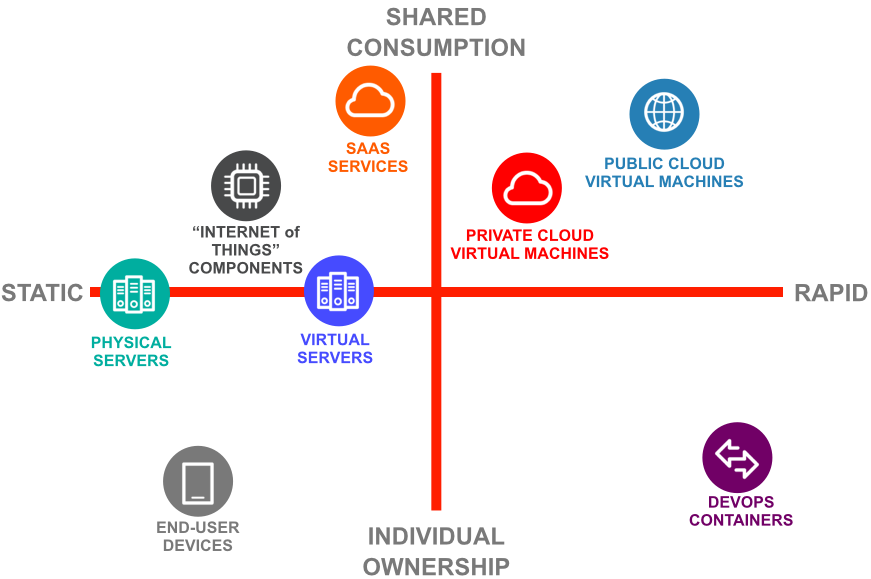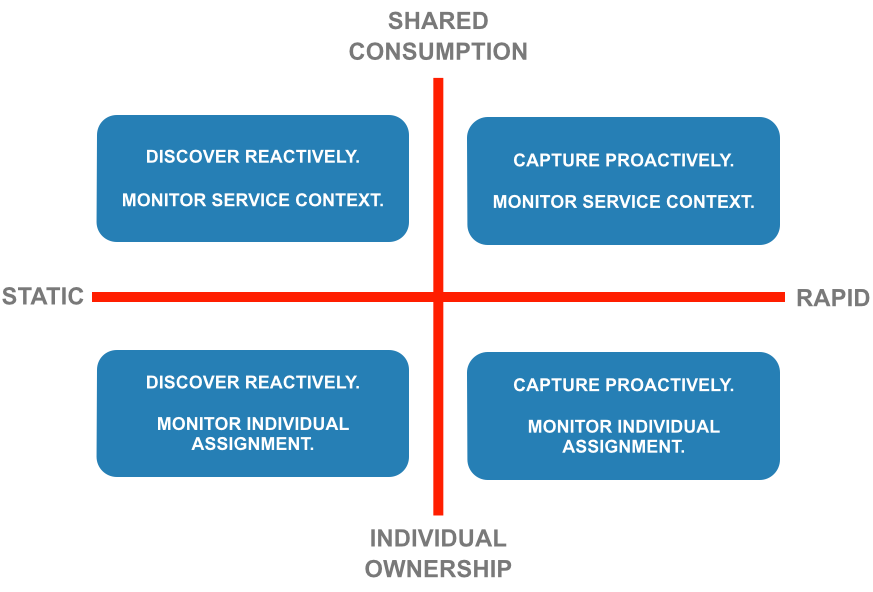IT assets are rapidly evolving, and so must our practices.
It is an interesting time for IT asset management (ITAM). The digital revolution in enterprises has had several profound effects on the corporate IT landscape. Rapid changes in technology have brought an increasingly diverse range of new technologies into ITAM’s scope. The increasing role of IT as a frontline business enabler, rather than as a backroom function, means that there is more focus on IT’s direct impact on the financials of the business. These changes make IT asset management both more important and more complex.
To address the complexity challenge, IT asset management strategies and methods need to evolve. To do that, we need to understand the differences between asset classes, and what they mean for ITAM.
Asset Classes
- Low Speed vs. High Speed
Some assets move slowly. A physical server rack mounted in a datacenter, is likely to remain in a single location for years. Its procurement and provisioning cycle is measured in days or even weeks.A cloud server instance is, by comparison, extremely fast-moving. It can be instantiated in minutes. It may shift rapidly across physical instances. In some cases, it might exist only for a short time (the default lifespan of a BMC pre-sales demo instance, for example, is three hours).
- Individual Context vs. Service Context
It is also important to think about each asset’s function and stakeholders. Client devices such as laptops and phones are typically assigned to a single user or to a small, defined group. They will usually have no single-service context because each user is likely to be using the devices to access a broad range of services. In contrast, a server will tend to be used—indirectly—by a large group of consumers, but will typically underpin a single service.
Building a Comprehensive Asset Strategy
An effective IT asset management strategy needs to account for both static and rapid assets, and for either individual or service contexts.
We can plot different types of IT assets on a chart with two axes: One for the rapidity of the asset and one for its context. Since every organization uses assets in slightly different ways, the precise position of each asset class will vary. However, an illustration of common asset class positioning might resemble this:

In the digital enterprise, a comprehensive IT asset management strategy will require appropriate methodologies and tools for each class of asset.
To maintain accurate data on static assets, we can use traditional discovery tools because a periodic data update is probably enough.
For assets such as Docker containers and public cloud servers, however, traditional periodic discovery will not be enough; the server may have appeared and disappeared before the discovery tool ever has the chance to see it. If that matters to you (or, perhaps, to your vendors’ software license auditors), then a more agile data collection method will be needed.
The service context of those server assets is important too, hence our methodology must focus on recording and managing that. End-user devices such as PCs, conversely, require us to monitor assignment to individuals, as this is the context we care about.
The quadrant of each asset in our chart determines the way we need to manage them:

Almost every enterprise runs on a diverse set of IT assets, old and new, “legacy” and modern. By applying this model, and determining the appropriate strategy for each asset class, the IT asset manager will be able to realize the full benefits of effective ITAM for any asset type—now and into the future.
These postings are my own and do not necessarily represent BMC's position, strategies, or opinion.
See an error or have a suggestion? Please let us know by emailing blogs@bmc.com.






